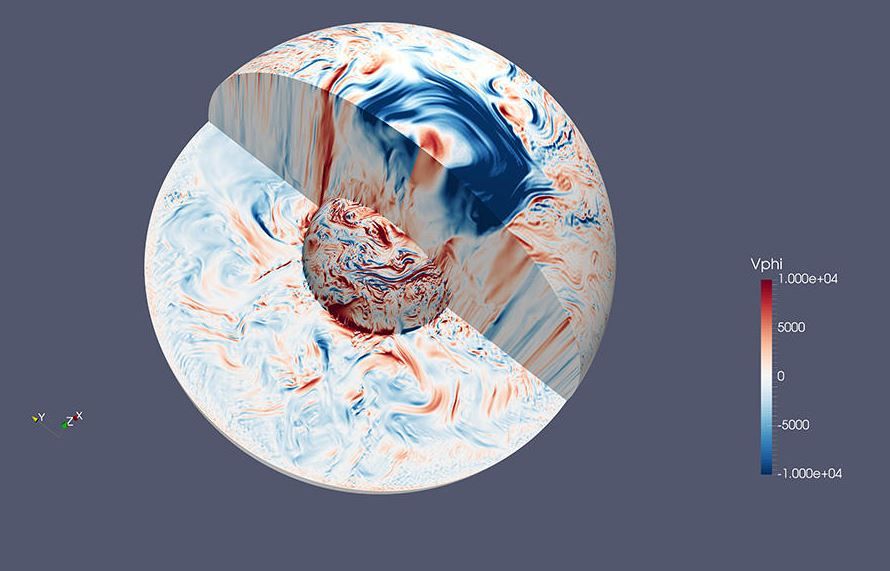
Were it not for our Earth's magnetic field, the planet would be bombarded by charged particles from the sun. Thankfully, the Earth possesses a metallic core, the outer part of which consists of molten metal, mostly iron. The swirling motions within this core create electrical currents that in turn give rise to Earth's magnetic field, but the exact nature of these currents aren't completely understood. It is, as Kurt Vonnegut might have said, akin to magic, except that it works.
Now, geophysicists at the French National Center for Scientific Research (or CNRS) have created one of the most detailed and striking models of fluid patterns within the Earth's outer core to date, to help scientists better understand the forces at play that give rise to Earth's magnetic field.
To create the video, the scientists used computer models and data gathered in experiments. Experiments are difficult to perform, however. As Nathanaël Schaeffer from the Institut des Sciences de la Terre explains in a statement, "It's difficult to reproduce the Earth's magnetic field in a lab. And liquid sodium is also extremely dangerous—it can trigger a blast when it comes into contact with water."
So the team took their data to a massive supercomputer in Montpellier, France to create the visualization. The simulation itself is extremely complex and took under a year to calculate, but that's a lot quicker than the 250 years it would have taken using a regular desktop machine, the researchers say.
"Using this heavy-duty supercomputer force, the geophysicists combined the fundamental equations of fluid mechanics with those of electromagnetics in a fast-rotating sphere representing the Earth's core," CNRS scientists explain. "From the vast amounts of data obtained, they then produced high-definition 3D simulations tracing the outer core's convection movements, but also, strikingly, the turbulence that randomly shakes them up."
This is of course not to say that we fully understand that Earth's core and its magnetic field—nothing could be farther from the truth. For example, scientists don't know exactly why and what causes Earth's magnetic field to switch poles, as it has in the past, and disagree about when it might in the future.
Turbulence, as well, has not been mathematically described. It remains one of the greatest open questions in physics since the term "turbulence" was first coined by Leonardo Da Vinci in 1507.
Uncommon Knowledge
Newsweek is committed to challenging conventional wisdom and finding connections in the search for common ground.
Newsweek is committed to challenging conventional wisdom and finding connections in the search for common ground.
About the writer
Douglas Main is a journalist who lives in New York City and whose writing has appeared in the New York ... Read more
To read how Newsweek uses AI as a newsroom tool, Click here.








